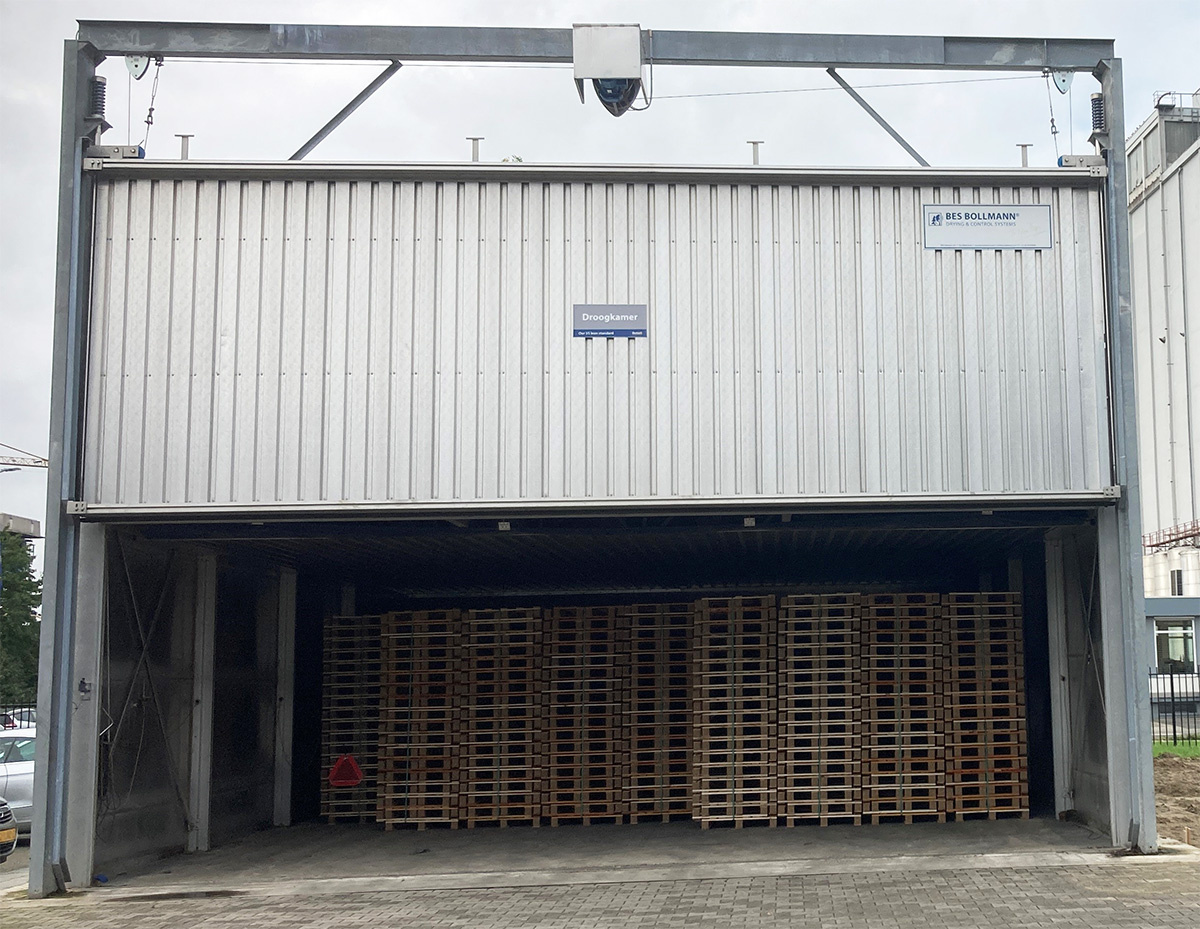Pallet drying, HT treatment & ISPM 15 certification
Pallets are ideal load carriers and indispensable for the storage and transport of goods. They are available in all kinds of sizes and made of different materials. Wooden pallets are the most commonly used pallets; they are often handled, making them suitable for export. In this blog, we will tell you all about pallet drying, heat treatment, and the ISPM 15 standard.
Drying of pallets
Pallets are made from different types of wood. Northern European Spruce does not need to be dried, because the wood goes dry into the trade. Central European Spruce, on the other hand, is wet wood and can be dried as needed. When drying pallets, the moisture percentage is returned to a drying chamber.

Mould formation in pallets
If you see discoloration in pallets, it may be due to mold. Fungi can occur when the wood gets too wet, for example, when stored outside in the rain. Trunk blue is a form of fungus that arises in the wood when blue mold nests in living trees. This causes a blue-grey discoloration. Other fungi arise on the surface of the wood and can be removed by yourself. These fungi are often green-coloured.
You can't prevent mold from forming, but drying wood does help. When you dry wood after sawing and reduce the moisture percentage, fungi will not spread or continue to grow.
How are pallets dried?
Wooden pallets are dried in a drying room. In the drying chamber, a certain percentage is set, and the temperature slowly rises. This removes the moisture from the wood and reduces the moisture percentage. Wood that has been dried in this way is called Kiln Dried (KD).

HT Treatment
Pallets can undergo HT treatment so that organisms are killed and do not spread further. This also ensures that these organisms no longer want to nest in the wood. With this treatment, the temperature is quickly increased. The wood is heated to the core to a temperature of at least 56 °C for at least 30 minutes.
What does HT stand for?
HT stands for Heat Treatment. Pallets that have had a Heat Treatment are suitable for export. If you see HT in our article numbers, it means that the wood has undergone a Heat Treatment. When you see HTKD, it means that it has both been heat-treated and dried in a drying room. HTKD stands for Heat Treatment, Kiln Dried.
ISPM 15
ISPM 15 is a phytosanitary regulation introduced by the International Plant Protection Convention and describes the treatment method of wood. This regulation was introduced to prevent the spread of live pests by transporting wooden packaging.
Wood is a natural product in which insects and other pests can nest. If this remains in the wood and it is then exported, it can cause damage to the ecosystem in the country of destination. Therefore, wooden packaging materials such as pallets and pallet collars must comply with the ISPM 15 standard. This regulation applies in many countries worldwide. Within the European Union, free export is possible and there is no ISPM 15 requirement.
When does wood meet the ISPM 15 standard?
To meet the ISPM 15 standard, the wood must undergo an HT treatment. The wood is first debarked, and then the core is heated to a temperature of at least 56 °C for at least 30 minutes. New Euro pallets are HT-treated and dried as standard and thus meet the ISPM 15 requirements. This makes them always suitable for export.

ISPM 15 Certification
Wood that has undergone heat treatment and meets the ISPM 15 standard is certified in the form of a stamp. This certification includes the IPPC logo, the country code followed by the manufacturer's code and the treatment code, for example HT or HTKD. Producers of wood must register with the Foundation for Marking Wooden Packaging (SMHV). This foundation issues the manufacturer codes and also carries out checks.

What is the difference between ISPM 15 and IPPC?
ISPM 15 and IPPC are two different terms used interchangeably and essentially mean the same thing. ISPM is the standard set and stands for International Standards for Phytosanitary Measures. IPPC stands for International Plant Protection Convention, the organisation that drew up this standard.
Buy wooden pallets at Rotomshop
You can easily buy wooden pallets online at the Rotomshop webshop. We offer pallets in all standard sizes: 1200x800mm, 1200x1000mm, 1140x1140mm, 800x600mm, 600x400mm and in a number of different sizes. So there is always a suitable pallet for your application!
Contact
Do you need help ordering pallets or other logistical aids, or do you want to order large quantities? Feel free to contact our customer service via info@rotomshop.co.uk or 01777 322100. We are happy to help you find your logistics solution!
